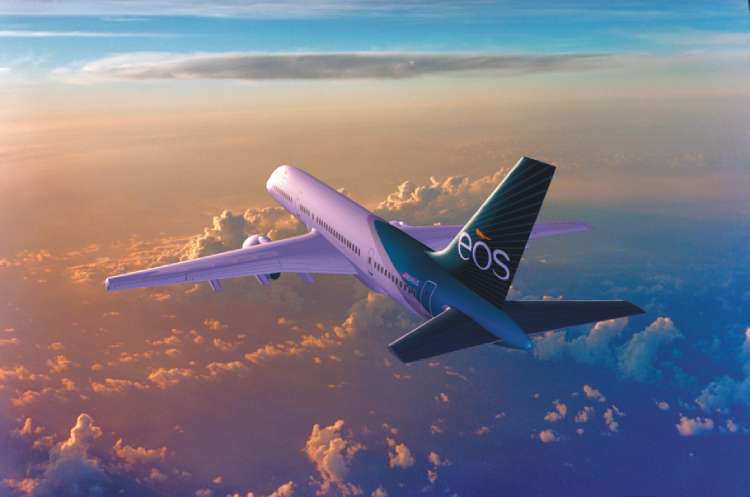Simon Calder: The man whose business is travel

Bright and lucrative: that's the future for transatlantic business-class-only flights, despite the collapse of two such airlines in four months. Just ask Silverjet and British Airways. BA is finessing its plans for a twice-daily link between London City airport and New York. Meanwhile, Silverjet is the last man standing after a bloody business-class-only war of attrition that began two-and-a-half years ago. The surviving airline is – according to its founder, Lawrence Hunt, "almost profitable".
In November 2005, the American carriers Eos and MAXjet launched competing services between Stansted and New York. Both aimed to deliver a kind of "son of Concorde" – an exclusive, business-class-only service. And both kitted out their Boeings to carry only a fraction of the usual capacity. The Eos 757s held just 48 passengers, while MAXjet's 767s carried 102. Well, that was the capacity. Unfortunately, the proportion of seats actually filled was far lower than expected. And average fares were way below break-even levels. Last August, MAXjet was selling seats through online agents for £500 return, undercutting even basic economy on the bigger airlines for the summer peak.
MAXjet and Eos squandered hundreds of millions of pounds of their investors' cash before they metaphorically crashed and burned.
Last Christmas Eve, when MAXjet applied for Chapter 11 bankruptcy protection, and stopped all flights, Eos put out a statement that it was "flight-level profitable", but that apparently turns out to be airline-speak for "we're still losing shedloads of cash", and last Sunday filed for bankruptcy, too.
Record oil prices are pushing costs way above predictions. The economic downturn is reducing demand: executive travel is often the first casualty of corporate belt-tightening. Throw in more competition (two new players launched on the Heathrow-New York route last month alone) and a credit crunch cutting funding; result, a perfect storm.
British Airways is confident it can ride out the storm. It is connecting New York with London City (using BA planes) and with Paris Charles de Gaulle with its new subsidiary, OpenSkies. The name indicates the business plan: taking advantage of the EU-wide freedom to fly between any two airports in Europe and the US. A Boeing 757 has been fitted with 24 "Biz" seats, that convert into 6ft flat beds, plus 28 premium-economy seats. It also has a small 30-passenger economy cabin, but OpenSkies is aimed squarely at the business market. The average BA jumbo devotes one-third of its seats to business and premium economy, while OpenSkies has two-thirds.
BA's new baby has serious teething problems. The airline's pilots despise the idea of OpenSkies hiring flight crew on different terms from those enjoyed by BA's existing pilots; they voted for strike action, and later this month the High Court will decide whether or not they may legally go ahead.
Equally pressing: the launch flight is due to take off next month, but the airline has yet to start selling tickets. This suggests a certain lack of enthusiasm. One theory has it that BA will use the Eos collapse as a reason to ditch OpenSkies, while eliminating the risk of a damaging pilots' strike. The airline flatly denies this.
What of Silverjet? Lawrence Hunt's airline began 15 months ago and has yet to break even. I asked its chief executive a question that I though was quite reasonable: how demoralising is it to start each day knowing that you are going to lose tens of thousands of pounds?
"That's a ridiculous question," riposted Mr Hunt. "Any business takes time to become profitable. You have to take a long-term view."
So let's do that. Competition is set to get still tougher. Next, tax. Passengers currently pay a flat £80 Air Passenger Duty tax break compared with business class on BA or Virgin. But by November next year, APD is replaced by Aviation Duty, based on aircraft size and distance flown. The tax bill for a typical Silverjet London-New York flight could double to £10,000. Yet Mr Hunt remains optimistic.
"Even if we had to add £100 to the ticket price, to fill Gordon Brown's black hole, we're still massively cheaper than our rivals. He hopes Silverjet's dwindling coffers are to be replenished to the tune of $100m by a Middle Eastern investor.
Meanwhile, among the Eos staff looking for jobs is the chief lifestyle officer, Adam Komack, who had insisted "Eos is not simply an airline, it's a lifestyle choice". Not like bankruptcy, then.
Subscribe to Independent Premium to bookmark this article
Want to bookmark your favourite articles and stories to read or reference later? Start your Independent Premium subscription today.

Join our commenting forum
Join thought-provoking conversations, follow other Independent readers and see their replies